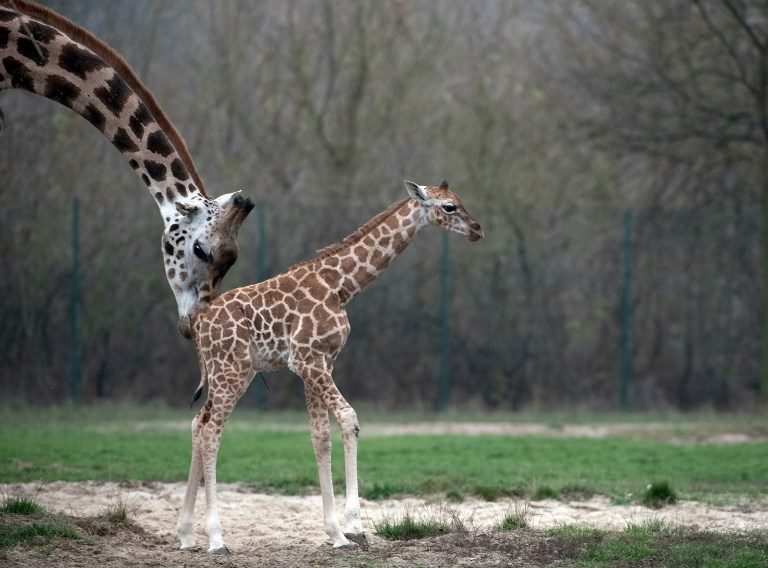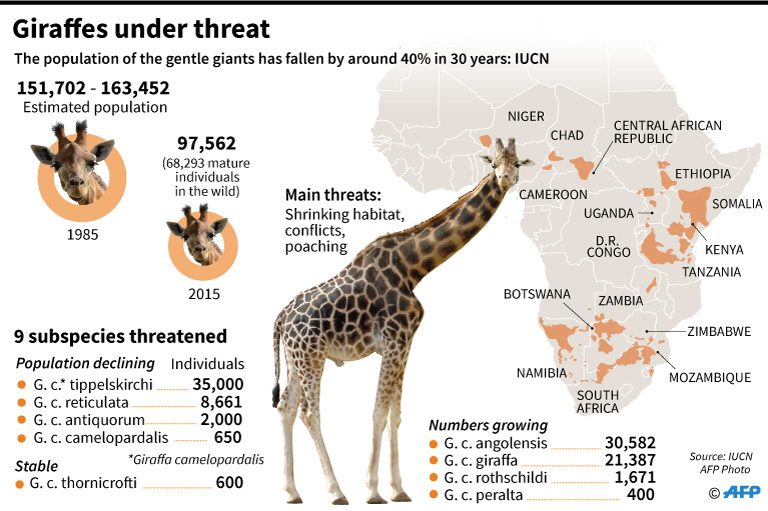SUMMARY
This is AI generated summarization, which may have errors. For context, always refer to the full article.

GENEVA, Switzerland – Wildlife-supporting countries on Thursday, August 22, backed regulating international trade in giraffes in a bid to offer more protection to the gentle giants, feared to be facing a “silent extinction”.
The vote in Geneva by parties to the Convention on International Trade in Endangered Species (CITES) recognizes for the first time that international trade is part of the threat facing giraffes.
The decision, which passed with 106 votes in favor to 21 votes opposed and 7 abstaining, took place in committee and still needs a stamp of approval by the full CITES conference before it wraps up on August 28.
The African giraffe population as a whole has shrunk by an estimated 40% over the past 3 decades, to just under 100,000 animals, according to the best figures available to the International Union for Conservation of Nature (IUCN).
And yet Thursday’s vote, which implies listing all giraffes under CITES Appendix II and thus requiring tracking and regulation of all trade in the species, was highly controversial.
The proposal to list the giraffe came from a range of countries in western, central and eastern Africa, where giraffe populations have been particularly hard hit.
Chad’s representative argued that “illegal cross-border trade (poses) a significant threat to the survival of giraffes.”
But they met harsh resistance from southern African countries where the populations have traditionally been better protected and are healthier.
Countries, including South Africa, Botswana and Tanzania, maintained there was little evidence that international trade is contributing to the decline of the giraffe.
And they argued that imposing international regulations was unfair to countries that have strived to protect their giraffes.
“Such a decision fails to recognize our conservation achievements,” the Tanzanian representative said.
The vote implies that legal trade in giraffe parts, including those obtained by trophy hunters on Africa’s legal game reserves, will be globally regulated.
Countries will be required to record the export of giraffe parts or artefacts, something only the United States currently does, and permits would be required for their trade.
The CITES Secretariat itself had voiced skepticism that trade was a major factor behind the decline of the giraffe, which has largely been linked to habitat loss.
But supporters argued that without a CITES listing, there is little available data on international trade.

They also pointed to US data indicating that in the decade prior to 2015 around 40,000 giraffe parts, mainly bones, had been traded.
Conservationists hailed the vote.
“This listing could not come soon enough,” Adam Peyman, head of the Humane Society International’s wildlife program, said in a statement.
“Securing CITES Appendix II protection for the giraffe throws a vital lifeline to this majestic species, which has been going quietly extinct for years.” – Rappler.com
Here are more stories about the Convention on International Trade in Endangered Species (CITES):
- More than 2,300 tigers killed and trafficked this century – report
- Global ban on sending wild elephants to zoos moves step closer
- Wildlife meet mulls trade rules to counter ‘unprecedented’ species declines
Add a comment
How does this make you feel?





There are no comments yet. Add your comment to start the conversation.